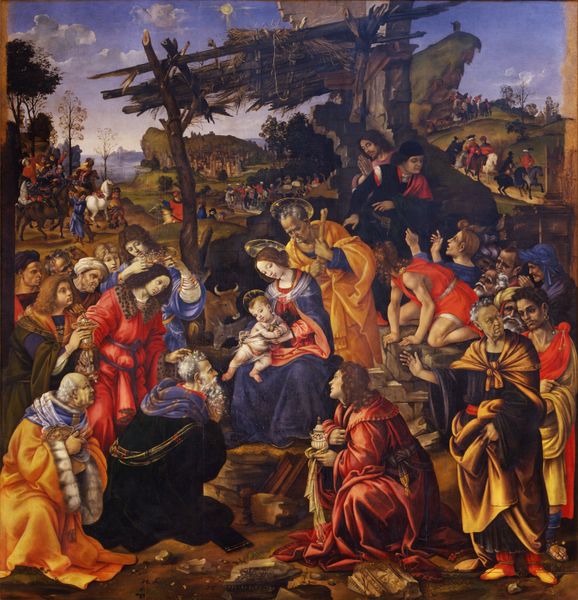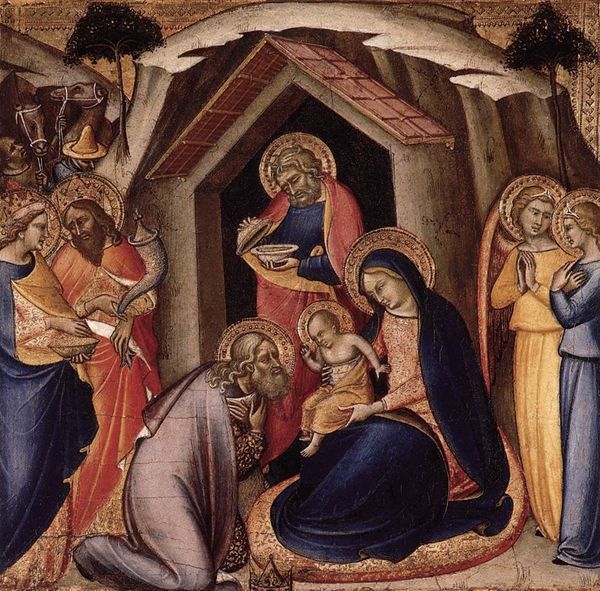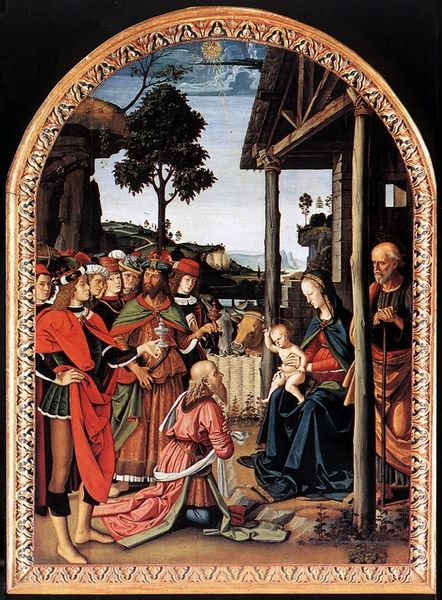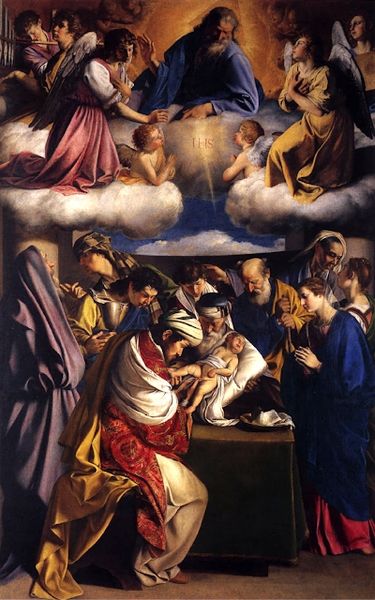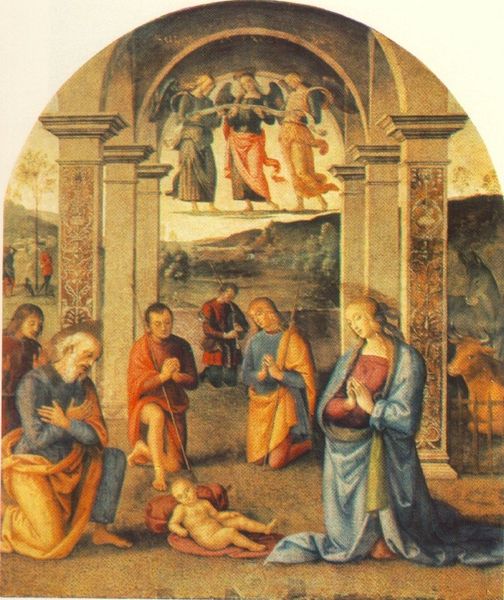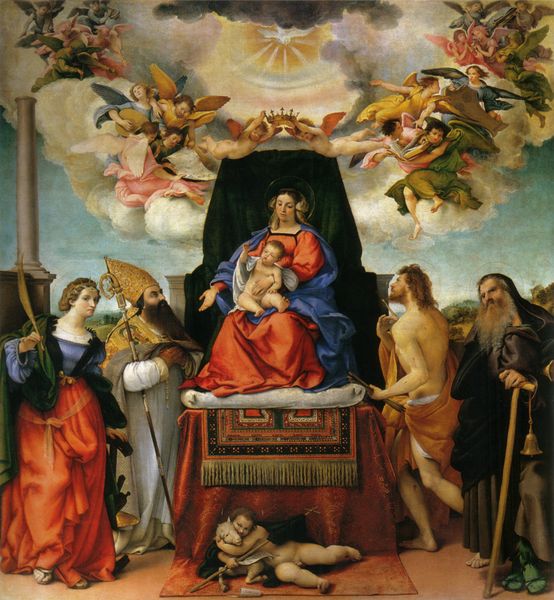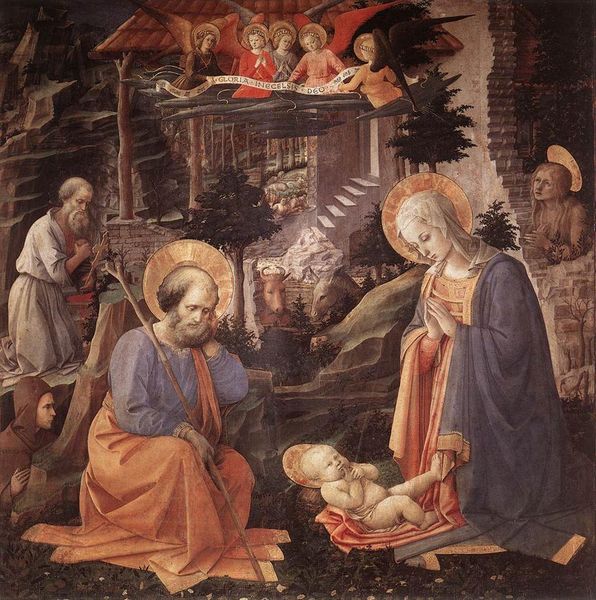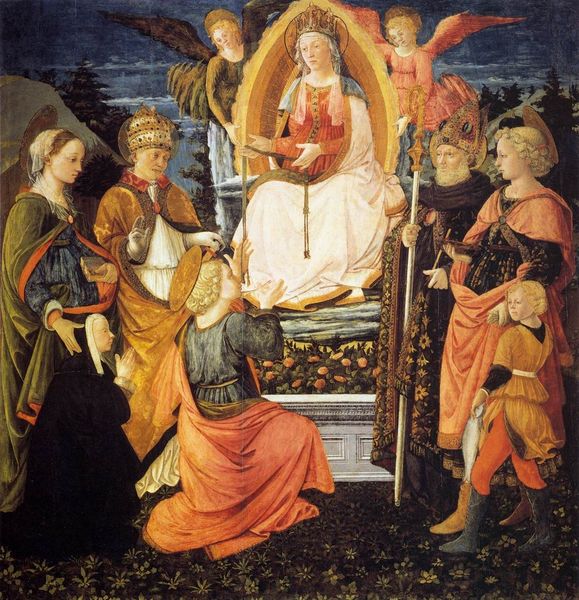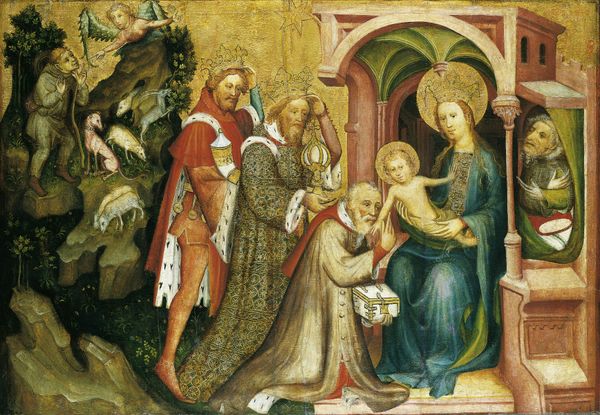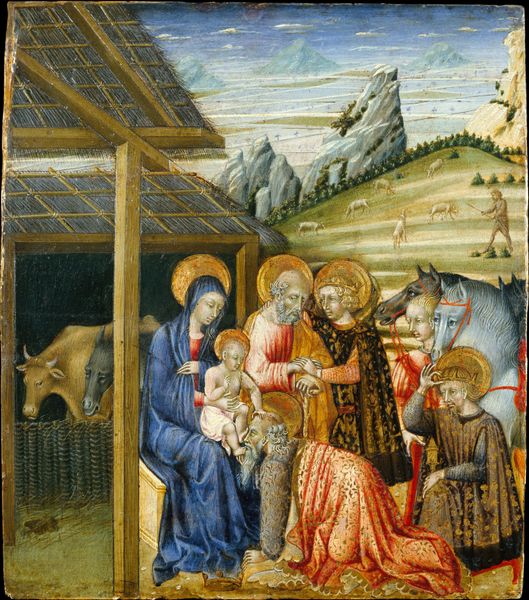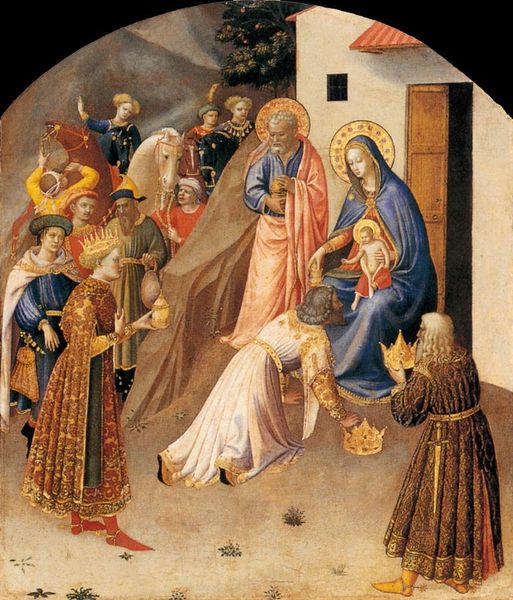
painting, oil-paint
#
narrative-art
#
painting
#
oil-paint
#
figuration
#
oil painting
#
christianity
#
genre-painting
#
history-painting
#
italian-renaissance
#
early-renaissance
#
christ
Dimensions: 145.7 x 145 cm
Copyright: Public domain
Andrea Mantegna painted “The Nativity” in the mid-15th century, using tempera on wood, a moment which speaks volumes about identity, faith, and artistic innovation during the Italian Renaissance. Mantegna’s work diverges from conventional nativity scenes. Instead of a static, devotional image, Mantegna infuses the scene with a sense of lived reality. Notice how the artist places the Holy Family in a dilapidated stable, a reflection of the humble circumstances surrounding Christ's birth. The figures surrounding Mary and the newborn Christ are not the typical wise men and shepherds, but a choir of angels, their gazes filled with reverence and adoration. Their presence underscores the divine significance of the event, yet their human-like features bring the celestial closer to the earthly. Mantegna's use of perspective and naturalistic detail invites viewers to contemplate the intersection of the divine and the human, the sacred and the mundane. The artist challenges us to consider the social implications of a savior born into poverty, raising questions about power, privilege, and the radical potential of faith.
Comments
No comments
Be the first to comment and join the conversation on the ultimate creative platform.
